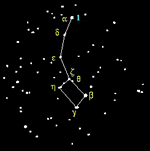
for New England
| IPM Home |
| About IPM
|
| About Polaris
|
| Ron Prokopy Tribute
|
| Bees in the Orchard
|
| Potato Leafhoppers and Fire Blight |
| Weather Monitoring
|
| Members Only
|
| Links
|
About IPM
Integrated Pest Management, or IPM, has been used by progressive growers and researchers for over 25 years in New England orchards. IPM is a "best practices" approach that primarily relies on cultural practices to maintain tree health, and the action of beneficial organisms to manage pests. IPM growers use the lowest possible dosage of the least disruptive pesticide, only when pest populations exceed economic threshold levels and alternative methods are ineffective. As with organic approaches, IPM emphasizes plant health and cultural practices as the first line of defense against pests. Unlike organic farming, which allows only the use of pesticides derived from natural sources, IPM does allow the use of synthetic pesticides when they have been shown to be both safe and effective. (Some of the synthetic materials, especially the newer, "softer" alternatives, may have a more favorable environmental and human health profile than the 'natural' option.)
What sorts of practices are used in an IPM orchard? One important concept is that of economic thresholds – knowing whether a pest is actually causing damage to the crop, and whether the cost of the damage will exceed the cost of controlling that pest. For this reason, monitoring pests is very important, and a variety of traps and sampling methods are used to monitor orchard pests. Relying on natural enemies for pest control is another cornerstone of IPM – in some cases it is necessary to introduce beneficial species, but in most cases, growers are able to encourage these species simply by staying away from broad-spectrum, long-lasting pesticides. Mating disruption involves saturating the local environment with pheromones – the natural chemicals that many insects use to locate their mates – so that males are unable to locate ‘calling’ females, and mating does not take place. Weather monitoring, computer-assisted prediction modeling, and pest mapping are some of the other important strategies used in IPM agriculture.
Most IPM orchardists in the Northeast are good environmental stewards, and the vibrancy of the orchard ecosystem reflects that stewardship - bluebirds, kestrels, orioles, and many other species of birds abound - often nesting in the apple trees; choruses of frogs may be heard from farm ponds, and even sensitive species like trout flourish in those ponds. Because IPM relies very much on the presence of beneficial insects to control pests, diversity of insects and other invertebrates is also very strong.
Consumers and neighbors who are concerned about human health and the environment should be aware that New England apple growers are leading the way to a safe and vibrant agro-ecosystem!